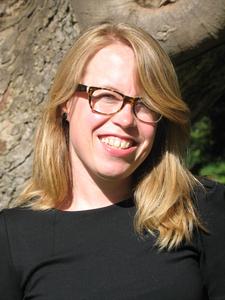Elsje van Kessel
NIAS Individual Fellow

Project title
Vehicles of change: Seized ships, material culture and the law between Europe and Asia
Research question
How did piracy and maritime warfare impact the circulation of goods on the Portuguese India Run? How did the seizing and destruction of ships shape a European visual and textual discourse about the global movements of objects?
Project description
When, around 1600, the Portuguese maritime expansion into Asia reached a peak, other European nations, such as the Dutch United Provinces, increasingly thwarted Portugal’s monopoly of trade routes in the Indian Ocean. My project focuses on the material impact of such acts of piracy and warfare on the Portuguese India Run. On the one hand, I examine the cargoes taken – consisting of textiles, spices, drugs, bullion, furniture, gemstones, porcelain, and countless other ‘exotic’ objects – and where these goods and objects went. On the other, the project studies the international legal debate that sprang up around these acts of sea-based violence. The Fellowship is among the first to examine this body of thought from the point of view of material culture and will reveal how seized ships shaped European critical thinking about the global circulation of portable objects.
Selected publications
“The Inventories of the Madre de Deus: Tracing Asian Material Culture in Early Modern England.” Journal of the History of Collections 32, no. 2 (2020): 207–23, https://doi.org/10.1093/jhc/fhz015
“The Making of a Hybrid Body: Corpus Christi in Lisbon, 1582.” Renaissance Studies 34, no. 4 (2020): 572–92, https://doi.org/10.1111/rest.12590
The Lives of Paintings: Presence, Agency and Likeness in Venetian Art of the Sixteenth Century (Studien aus dem Warburg-Haus; 18). Berlin and Boston: De Gruyter, 2017